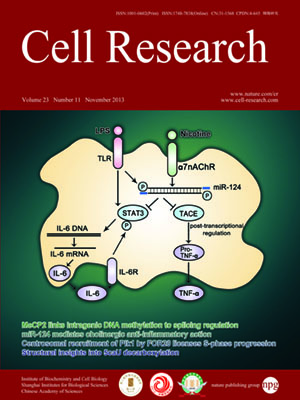
Volume 23, No 11, Nov 2013
ISSN: 1001-0602
EISSN: 1748-7838 2018
impact factor 17.848*
(Clarivate Analytics, 2019)
Volume 23 Issue 11, November 2013: 1247-1248
RESEARCH HIGHLIGHTS
Mechanisms of apoptotic phosphatidylserine exposure
Guillermo Mariño1,2 and Guido Kroemer1,2,3,4,5
1INSERM, U848, F-94805 Villejuif, France
2Université Paris Descartes/Paris V, Sorbonne Paris Cité, 75006 Paris, France
3Equipe 11 labellisée par la Ligue Nationale contre le Cancer, Centre de Recherche des Cordeliers, F-75006 Paris, France
4Pôle de Biologie, Hôpital Européen Georges Pompidou, AP-HP, F-75015 Paris, France
5Metabolomics and Cell Biology Platforms, Institut Gustave Roussy, F-94805 Villejuif, France
Correspondence: Guido Kroemer(kroemer@orange.fr)
It has been a long-standing enigma which scramblase causes phosphatidylserine residues to be exposed on the surface of apoptotic cells, thereby facilitating the phagocytic recognition, engulfment and destruction of apoptotic corpses. In a recent paper in Science, Nagata and coworkers reveal that the scramblases Xkr8 and its C. elegans ortholog, CED-8, are activated by caspase cleavage in apoptotic cells.
10.1038/cr.2013.115
FULL TEXT | PDF
Browse 2137


